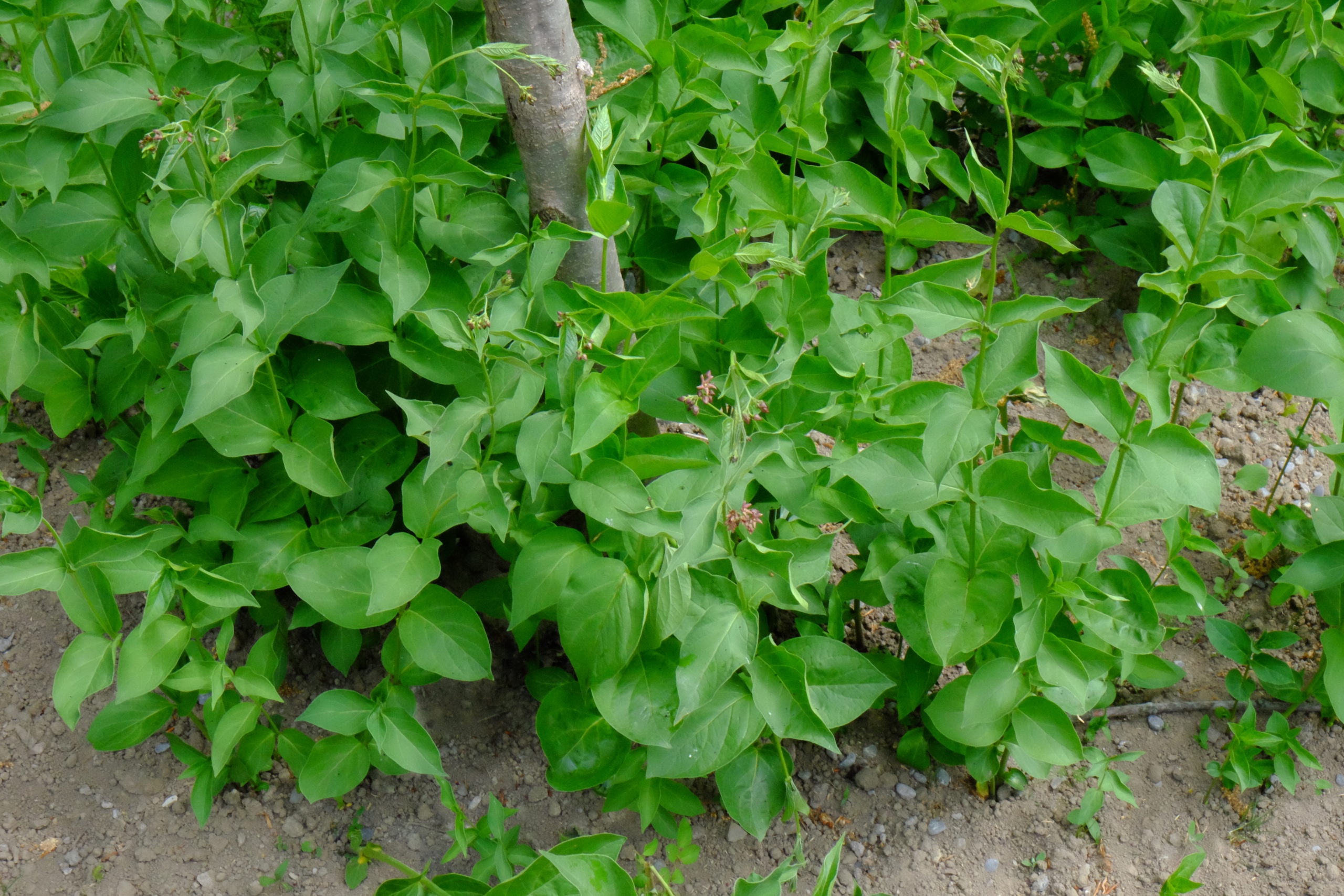Toronto’s ravines are unhealthy
Over the years, the health of Toronto’s ravines has declined because they are threatened by invasive species, loss of biodiversity, and urbanization.1 Both public and private ravine land must be taken care of to bring back a healthy, thriving ecosystem. If we don’t act now, our ravines will not be healthy enough to support the flora and fauna within them, and the ravines could face complete ecological collapse.2
Why is ravine health failing?
One main issue is invasive plant species, which are plants that have been introduced to our ravines from somewhere else.3 Occasionally, invasive plants provide some ecological value where they grow but the majority of the time this is not the case. Invasive plants do more damage than good because they displace our native plants and threaten the biodiversity of Toronto’s ravines. Biodiversity is essential to a healthy ravine system.
Simply put, biodiversity refers to the variety of life on earth. Biodiversity exists on the genetic, species, and eco-systems level of our environment.4
When you look out onto your property or take a walk in the ravine, how many different bird species do you see? How many different caterpillars and butterflies and how many different flowers and trees? You may not realize it, but nature is teeming with life and the more biodiverse an ecosystem is, the healthier it is. For example, an ecosystem with high biodiversity is more resilient to threats like extreme weather or disease.5
The aggressive growth of invasive plant species threatens biodiversity because they displace our native plants and grow exponentially. Invasive plants replace hundreds of different native species and provide little benefit to our native wildlife.6
In fact, a recent re-survey of three major ravine systems in Toronto found that invasive plants such as Japanese knotweed and garlic mustard cover 95% of the forest floor in these areas—that’s almost all of it!7
You can help! Find your property on a map and learn how to help.
Footnotes
1– Davies, E., Dong, A., Berka, C., Scrivener, P., Taylor, D., Smith, S. M. (2018). The Toronto ravines study: 1977- 2017. Faculty of Forestry, University of Toronto. Retrieved from: https://torontoravinesdotorg.files.wordpress.com/2018/09/toronto-ravines-study-1977-to-2017-with-component-studies.pdf
2- Davies, E., Dong, A., Berka, C., Scrivener, P., Taylor, D., Smith, S. M. (2018). The Toronto ravines study: 1977- 2017. Faculty of Forestry, University of Toronto. Retrieved from: https://torontoravinesdotorg.files.wordpress.com/2018/09/toronto-ravines-study-1977-to-2017-with-component-studies.pdf
3 – Ontario Invasive Plant Council. (2020). Invasive Plants. Retrieved from: https://www.ontarioinvasiveplants.ca/invasive-plants/
4 – Toronto City Planning Parks, Forestry, and Recreation with the Toronto and Region Conservation Authority. (2019).Wild, connected, and diverse: a biodiversity strategy for Toronto. Retrieved from: https://www.toronto.ca/legdocs/mmis/2019/ie/bgrd/backgroundfile-136906.pdf
5 – Toronto City Planning Parks, Forestry, and Recreation with the Toronto and Region Conservation Authority. (2019).Wild, connected, and diverse: a biodiversity strategy for Toronto. Retrieved from: https://www.toronto.ca/legdocs/mmis/2019/ie/bgrd/backgroundfile-136906.pdf
6 – Ontario Invasive Plant Council. (2020). Invasive plants: impacts. Retrieved from: https://www.ontarioinvasiveplants.ca/invasive-plants/impacts/
7 – Davies, E., Dong, A., Berka, C., Scrivener, P., Taylor, D., Smith, S. M. (2018). The Toronto ravines study: 1977- 2017. Faculty of Forestry, University of Toronto. Retrieved from: https://torontoravinesdotorg.files.wordpress.com/2018/09/toronto-ravines-study-1977-to-2017-with-component-studies.pdf

